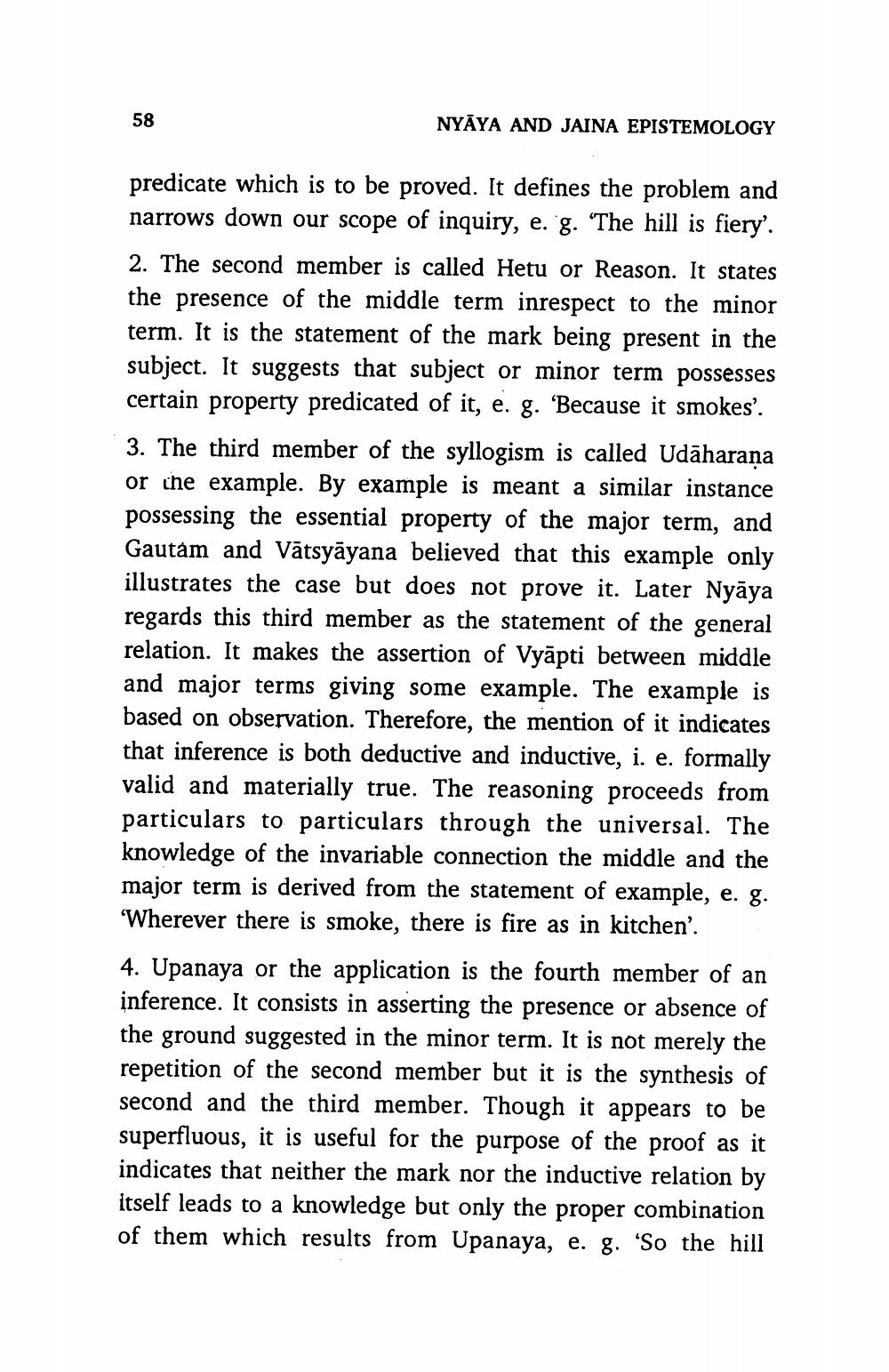________________
58
NYAYA AND JAINA EPISTEMOLOGY
predicate which is to be proved. It defines the problem and narrows down our scope of inquiry, e. g. The hill is fiery'. 2. The second member is called Hetu or Reason. It states the presence of the middle term inrespect to the minor term. It is the statement of the mark being present in the subject. It suggests that subject or minor term possesses certain property predicated of it, e. g. “Because it smokes'. 3. The third member of the syllogism is called Udāharana or the example. By example is meant a similar instance possessing the essential property of the major term, and Gautam and Vātsyāyana believed that this example only illustrates the case but does not prove it. Later Nyāya regards this third member as the statement of the general relation. It makes the assertion of Vyāpti between middle and major terms giving some example. The example is based on observation. Therefore, the mention of it indicates that inference is both deductive and inductive, i. e. formally valid and materially true. The reasoning proceeds from particulars to particulars through the universal. The knowledge of the invariable connection the middle and the major term is derived from the statement of example, e. g. “Wherever there is smoke, there is fire as in kitchen'. 4. Upanaya or the application is the fourth member of an inference. It consists in asserting the presence or absence of the ground suggested in the minor term. It is not merely the repetition of the second member but it is the synthesis of second and the third member. Though it appears to be superfluous, it is useful for the purpose of the proof as it indicates that neither the mark nor the inductive relation by itself leads to a knowledge but only the proper combination of them which results from Upanaya, e. g. 'So the hill




